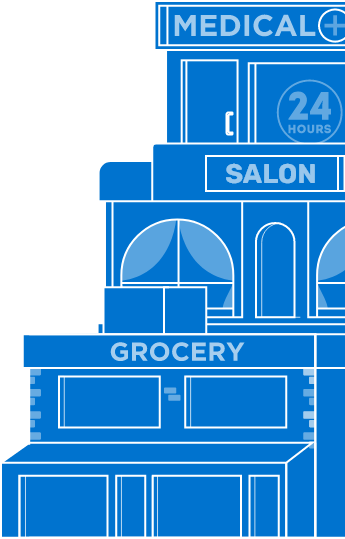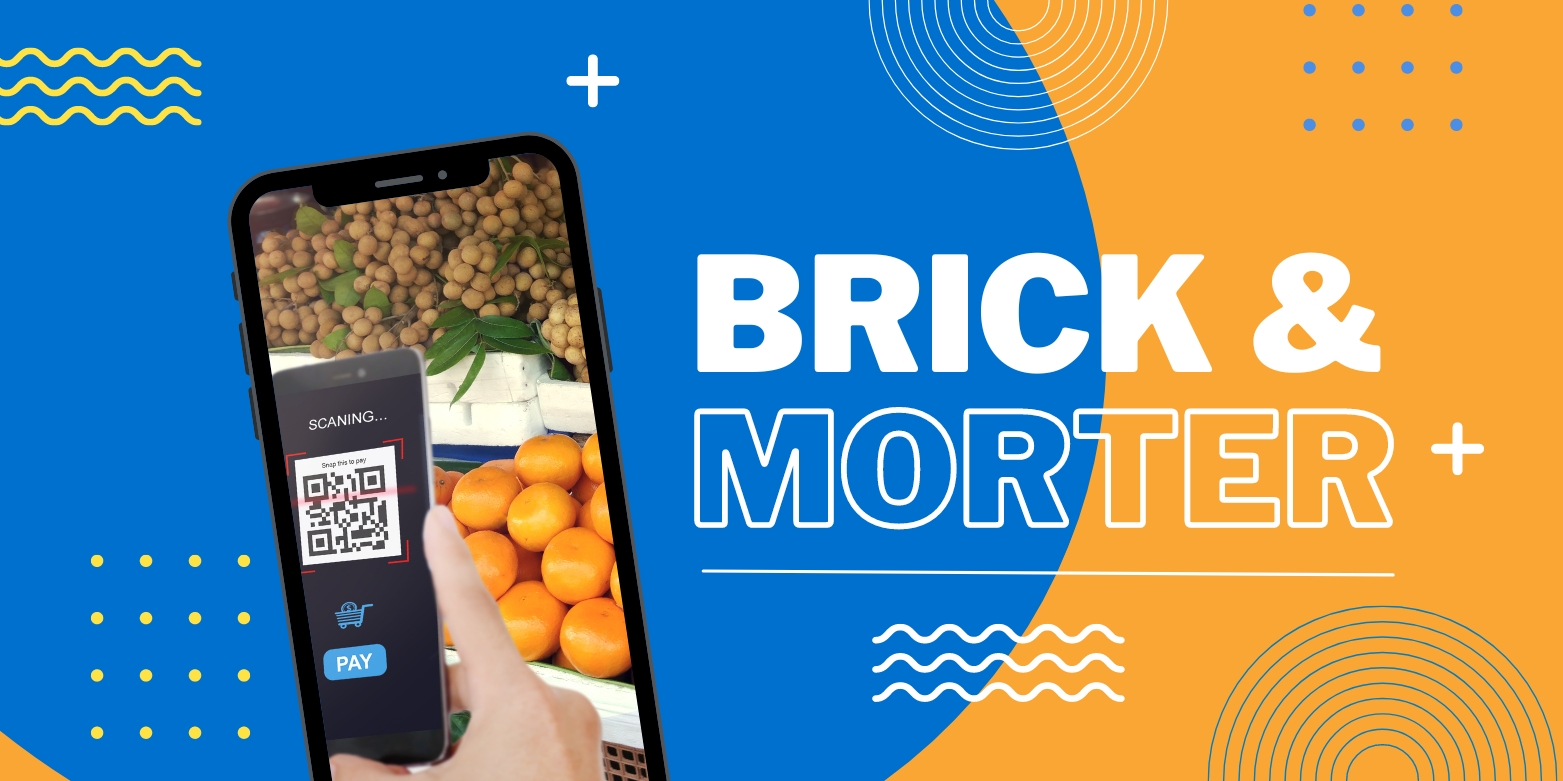The rise of online grocery shopping has left many to wonder what the impact will be on the traditional brick-and-mortar store model.
While online grocery sales have undoubtedly experienced a surge in recent years, particularly during the pandemic, the answer to this question is not as clear-cut as it may seem. After a Pandemic driven spike, total sales have stabilized over the last few years.
For owners of grocery-anchored shopping centers, understanding the true impact of online grocery shopping is crucial.
Here, we delve into the click-and-collect trend, analyze its potential implications, and explore why brick-and-mortar grocery stores are here to stay.
The Rise of Click & Collect:
Click & Collect, also known as "buy online, pick up in-store" (BOPIS), has emerged as a popular option for grocery shoppers. It allows customers to order groceries online and pick them up at a designated time slot at their chosen store, eliminating the need to navigate aisles and wait in checkout lines.
This convenience-driven approach has resonated with busy consumers, with studies showing that <BOPIS grocery sales grew by a staggering 230% in the US alone in 2020. Since then, total sales have been flat or decreased slightly with pickup remaining stable at approximately $44BN.
Will Click & Collect Cannibalize Brick-and-Mortar Sales?
While the convenience of Click & Collect cannot be denied, it's important to remember that it's not a completely new concept. In 2017, nearly one-third of shoppers made online purchases and subsequently picked-up their orders at physical stores during the holiday season (according to Co-Pilot).
Many grocery stores have offered similar services for years, and the recent surge is likely due to the pandemic's influence on shopping habits rather than a fundamental shift in consumer preferences.
Furthermore, studies suggest that Click & Collect actually complements, rather than cannibalizes, brick-and-mortar sales.
A 2022 study by Brick Meets Click found that 70% of BOPIS grocery shoppers also make additional impulse purchases while in-store. This highlights the continued value of physical stores in providing a tactile shopping experience and encouraging unplanned purchases.
The Advantages of Brick-and-Mortar Grocery Stores:
Despite the rise of Click & Collect, brick-and-mortar grocery stores still offer several advantages that online shopping cannot replicate:
Product Discovery:
The ability to browse aisles and physically interact with products fosters product discovery and encourages trial of new items, something online shopping struggles to replicate.
Impulse Purchases:
The in-store environment is designed to entice impulse purchases, which can boost overall basket sizes and store revenue.
Personalized Service:
Brick-and-mortar stores can offer personalized service, such as assistance from butchers, deli staff, pharmacy and bakery experts, which online shopping cannot match.
Community Hub:
Grocery stores often serve as community hubs, providing gathering places and fostering social interaction, an aspect entirely absent in online shopping.
The Future of Grocery Retail: A Symbiotic Relationship
The future of grocery retail has seen a symbiotic relationship between online and offline channels, with each playing a distinct role in the overall shopping experience. Click & Collect caters to convenience-driven shoppers, while brick-and-mortar stores continue to offer product discovery, impulse purchases, personalized service, and a sense of community.
For grocery-anchored REITs, this presents an opportunity to adapt their investment strategies to cater to this evolving landscape.
Investing in properties with flexible layouts that can accommodate Click & Collect services while maintaining a focus on creating an engaging in-store experience has shown to be a key to success. More than 90% of PECO’s grocers offer BOPIS options.
Click & Collect and Current Tenants: Navigating the Changing Landscape
With Click & Collect playing an increasingly prominent role in the grocery scene, it's natural for current tenants in grocery-anchored centers to wonder how this trend might impact their businesses.
While challenges do exist, it's important to remember that adaptation and innovation are key to mitigating threats and thriving in the evolving retail landscape.
Potential Impacts on Tenants:
Shifting Consumer Preferences:
Changing consumer preferences toward online grocery shopping might affect sales for specific store categories, such as convenience stores or specialty food shops.
Competition for Click & Collect Space:
Tenants might face competition for designated Click & Collect pick-up areas within the center, potentially impacting parking and access for their own customers.
Strategies for Mitigating the Impact:
Embrace Omnichannel Retail:
Current tenants can integrate Click & Collect services into their own operations, offering customers the convenience of online ordering with the benefits of in-store pick-up or delivery.
Focus on In-Store Experience:
Enhance the physical shopping experience by focusing on product discovery, personalized service, and creating a welcoming and engaging atmosphere.
Leverage Community Connections:
Strengthen ties with the local community through events, partnerships, and initiatives that bring people together.
Collaborate with Other Tenants:
Partner with other businesses in the same center to offer joint promotions, events, and loyalty programs that incentivize foot traffic and attract new customers.
Data-Driven Decisions:
Utilize data analytics to understand customer behavior and tailor offerings to their evolving needs and preferences.
Shared Convenience Parking
During the pandemic, PECO implemented it’s Front Row To Go shared convenience parking concept to mitigate the impact of dedicated parking on tenants, or neighbors as we call them. These strategically located parking spaces serve as a resource for customers that need to get in and out quickly and gives the flexibility to visit multiple establishments. 96% of PECO portfolio includes the Front Row To Go curbside pickup program.
Brick and Mortar is Here To Stay
While Click & Collect presents a shift in the grocery landscape, it's not a singular force dictating the fate of brick-and-mortar stores. Grocery-anchored REITs can navigate this evolution by investing in adaptable properties and fostering a symbiotic relationship between online and offline channels.
By embracing omnichannel retail, enhancing the in-store experience, fostering community connections, and collaboratively adapting to local trends, they can turn this challenge into an opportunity.
From optimizing space utilization to offering Click & Collect options, proactive adaptation is key to ensuring a healthy and vibrant future for both the center and its tenants. Ultimately, the key lies in understanding the local context, leveraging data-driven insights, and embracing innovation to create a win-win for all stakeholders.
Published On Apr 08, 2024
in Grocery




